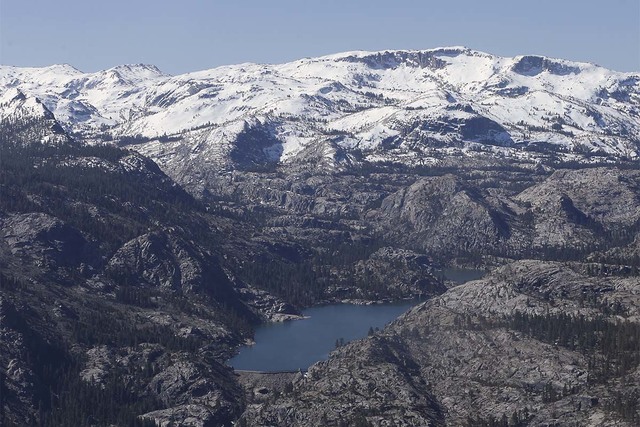Sierra Nevada lakes hold climate clues

RENO — Anyone with an internet connection can see temperature and air sampling data that shows Earth is warming due to humans burning fossil fuels.
But when it comes to learning what climate change means to pristine Sierra Nevada lakes, tapping a keyboard isn’t good enough.
The estimated 12,000 to 14,000 lakes dotting the range don’t come equipped with their own internet-enabled sensors.
That means unlocking the secrets of those small, remote lakes that characterize the high Sierra requires hiking. Lots of hiking.
Fortunately, there is a team of scientists willing to accept the challenge, reported the Reno Gazette-Journal.
And one of them, Steven Sadro of University of California, Davis, recently spoke to a packed house at the Tahoe Environmental Research Center in Incline Village.
Sadro, a lifelong backpacker, described his work at Emerald Lake in Sequoia National Park and his motivation to learn as much as possible about climate change and the Sierra Nevada.
“It is something really special to me,” Sadro said. “The Sierra, I think, holds a special place in a lot of people’s hearts.”
Hot in here? Warming climate bad news for Sierra snow
Sadro is one of dozens of scientists who are part of the Emerald Lake Watershed Study in the Tokopah Valley.
The remote location means the scientists haul much of their equipment to the site on foot, which means carrying it more than 5 miles.
“Unlike many people who study lakes, Steve does it the hard way,” Geoffrey Shladow, director of the Tahoe center, said of Sadro. “He walks to them. These are lakes that are very remote that few people get to.”
Sadro’s recent work includes taking a closer look at lake temperatures in the study area to learn about how the lakes interact with the surrounding climate.
It’s important because changing lake temperatures have ramifications throughout the ecosystem.
“It fundamentally determines the amount of productivity a lake can support,” Sadro said. “If a lake has fish, the size and quality of those fish is going to be related to productivity.”
It’s not just fish. Productivity affects nutrients, insects, bats, birds and other wildlife.
Sadro said his latest work, which hasn’t yet been published, shows lake temperature isn’t always directly correlated with the air around it.
That’s because the small Sierra lakes he studies are greatly refilled by snowmelt. And the amount of snow in a given season greatly affects the lake temperature.
When snow is plentiful lakes stay cool later into the year. When there’s less snow the lakes warm sooner.
In that way the snow acts as a buffer between the rising air temperatures in mountain basins and the temperature of the lakes.
However, climate data shows low snow years are becoming more frequent than they have been in past decades. That could spell trouble for High Sierra lakes.
“In general colder waters are generally better,” Sadro said. “There are all kinds of water quality issues that come with warmer water.”
Further research could help scientists analyze the Sierra to identify vulnerability of specific lakes. For example, lakes below spots that accumulate more snow and stay shaded longer might be among the less vulnerable than others. And accurately anticipating which lakes are most vulnerable could help scientists and land managers better deploy resources to cope with the changes.
“Understanding variation in how the system is affected might impact your approach to managing lakes,” he said.